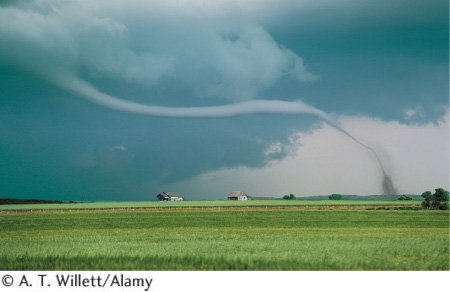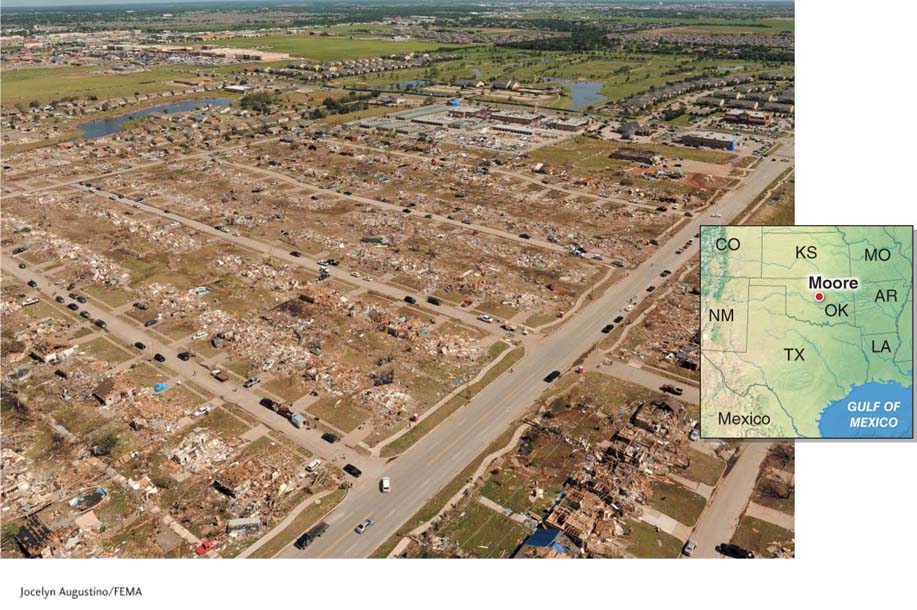THE RESTLESS SKY: Storm Systems and El Niño
5
158
159
Chapter Outline
5.1
Thunderstorms
5.2
Thunderstorm Hazards: Lightning and Tornadoes
5.3
Nature’s Deadliest Storms: Hurricanes
5.4
Midlatitude Cyclones
5.5
El Niño’s Wide Reach
5.6
Geographic Perspectives: Are Atlantic Hurricanes a Growing Threat?

LIVING PHYSICAL GEOGRAPHY
Why do some thunderstorms rotate?
How wide is a bolt of lightning?
Do tornadoes ever strike the same place twice?
What does the word hurricane mean?
160
THE BIG PICTURE
Atmospheric systems range in size and strength from afternoon thunderstorms to large and intense hurricanes. Atlantic hurricanes may become stronger in the coming decades.
LEARNING GOALS
After reading this chapter, you will be able to:
5.1
Distinguish among three types of thunderstorms and describe the weather associated with each.
5.2
Discuss how lightning and tornadoes form and the hazards that each presents.
5.3
Explain how hurricanes develop, where they occur, and what makes them dangerous.
5.4
Review the major characteristics and stages of development of a midlatitude cyclone.
5.5
Discuss how El Niño forms and describe its global effects.
5.6
Assess the current and potential vulnerability of the United States to major hurricanes.
THE HUMAN SPHERE:
The EF5 Tornado
THE LARGEST and most locally intense storm on the planet is the EF5 tornado (as rated on the enhanced Fujita scale; see Section 5.2). An EF5 tornado has wind speeds of more than 322 km/h (200 mph). There have been approximately 60 EF5 tornadoes in the United States over the last six decades, an average of one per year. In some years, there are none, and in other years, several develop during a single tornado outbreak over the course of a few days. Canada, the country with the second highest tornado activity after the United States, has seen only one EF5 tornado in its recorded history.
Winds in an EF5 tornado can destroy most human-

Figure 5.1
This chapter highlights storm systems in the atmosphere. We start with thunderstorms and the phenomena they produce, such as lightning and tornadoes. We then move to the smaller-
161